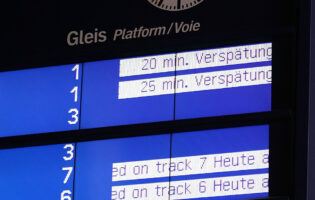Steps to Creating a Bicycle-Friendly City
Did you know that there is approximately one bicycle trip taken in the U.S. for every twenty taken in Germany? AGI Fellow and Assistant Professor of Urban Affairs and Planning at Virginia Tech’s School of Public and International Affairs Dr. Ralph Buehler recently co-wrote an article with Dr. John Pucher titled “Walking and Cycling in Western Europe and the United States; Trends, Policies, and Lessons” that is full of interesting facts about bicycle usage (and walking) and ways that either side of the Atlantic can learn from each other’s experiences. It includes a number of surprising statistics, like the fact that women account for approximately a quarter of all bicycle trips in the U.S., Canada, and the UK, and that “cyclist fatalities per kilometer are 3 to 5 times higher in the United States than in Denmark, Germany, and the Netherlands.”
The authors suggest that beyond characteristics of culture, topography, and climate, some of the most important short-term methods to creating a biker-friendly city are:
- Creating a network of separate bike lanes and paths. It is especially helpful if they are well-lit with clear markings and wide enough to allow for “sociable” riding of multiple cyclists riding side-by-side. These lanes should not just be located in the countryside for pleasure riding but downtown so commuters can get to work.
- Implementing “traffic calming,” a method of reducing the speed of motor vehicles to avoid and reduce the impact of crashes with non-motorists. German cities use traffic calming in almost all of their neighborhood streets. Speed limits in these areas are typically 30 km/h, but sometimes as low as 7 km/hr.
- Allowing for increased integration with other modes of transportation. This includes adding spaces for bicycles to be parked near subway stations and bus stops and making it possible to carry your bicycle onto buses and the subway.
- Promoting training and traffic education (including bicycle safety) beginning at a very early age. This includes training for cyclists and motorists.
- Discouraging car usage by increasing the cost of ownership and usage (gas sales tax, registration fees, driver training fees, etc.).
For more by Ralph Buehler, please see his website.
Ralph Buehler and John Pucher have also edited a book called “City Cycling” that will be published in October. They have co-written five chapters and the other nine are written by cycling experts from North America, Western Europe, and Australia.









